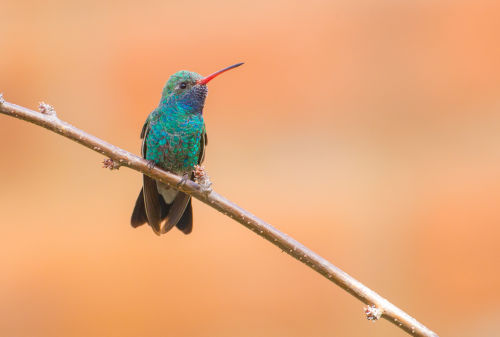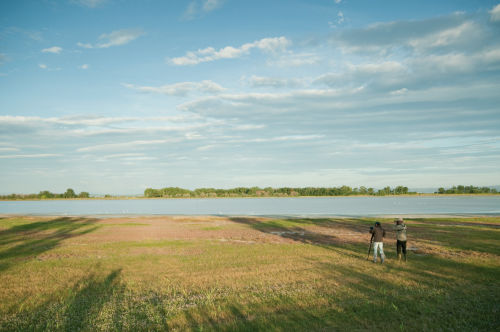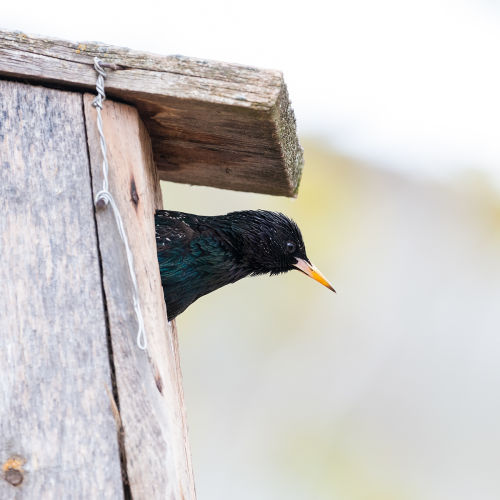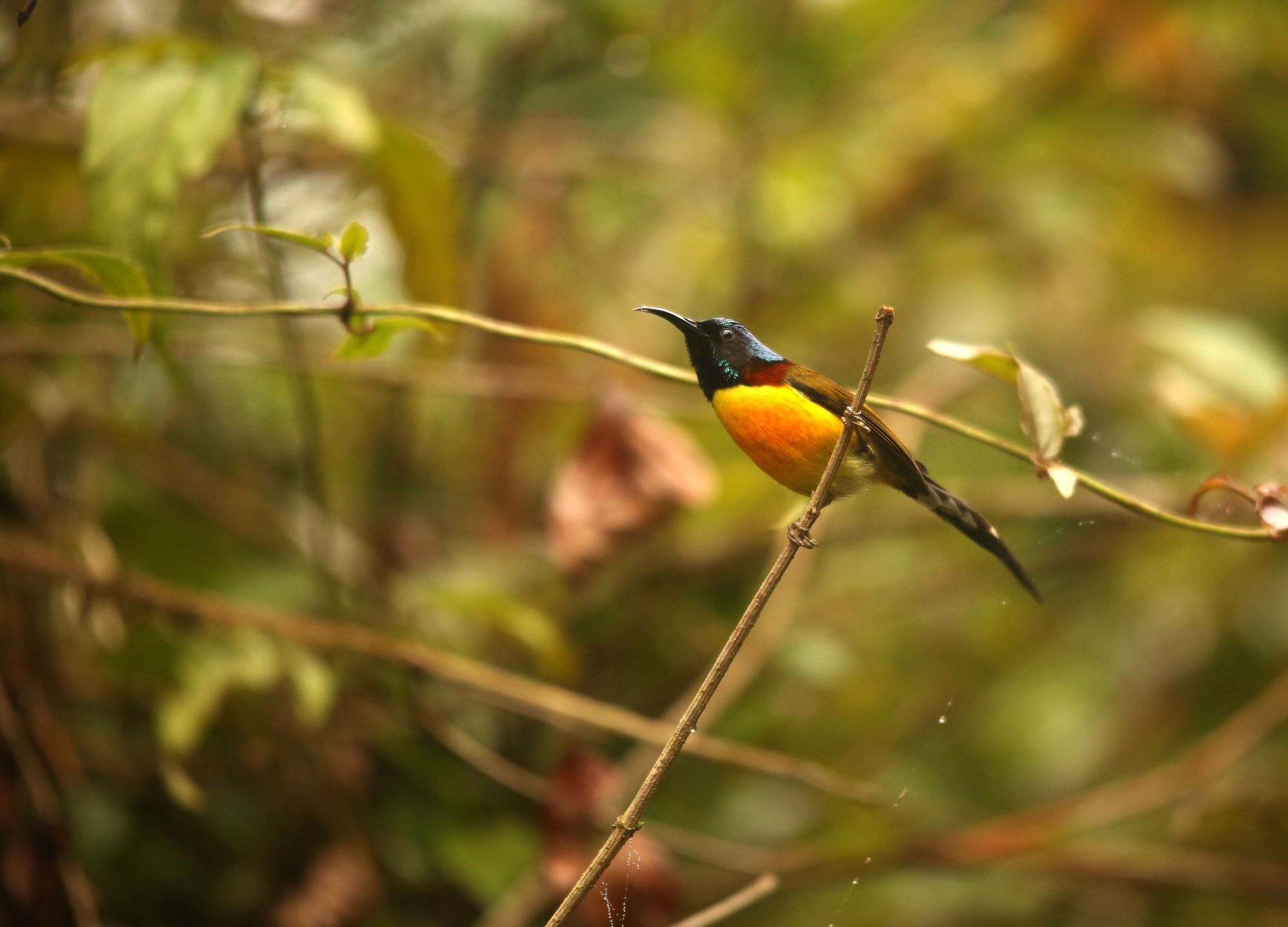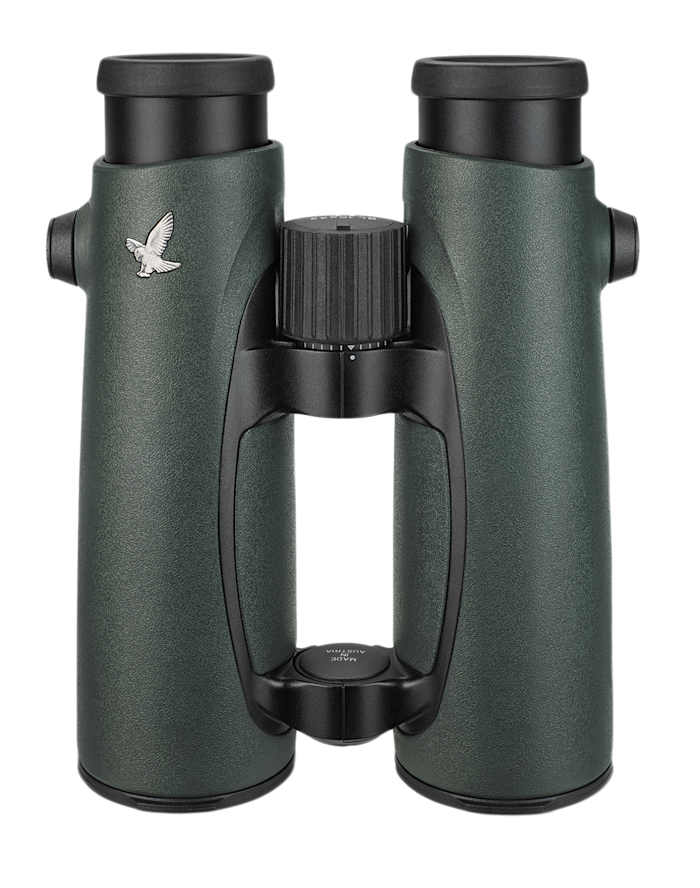Singalila National Park, on the Indo-Nepal border, a few ridges away from Darjeeling, the tea capital of the world, is a birder’s paradise. Although I mainly went there to observe the rare Red Panda, but the area offers an unbelievable variety of birds. The region’s abundant birdlife made this trip a very special experience for me as a birder as well.
Birds, birds, birds…
We started our tour from Kayakatta, a tiny hamlet at an altitude of 10,000 feet. The twittering white-browed fulvettas were the first to greet us as they moved low amongst the undergrowth. Their concert was enriched by the loud calls of laughingthrushes along a steep forest precipice. We got glimpses of the black-faced laughingthrush, a flock of six, but only one paused long enough for us to get a good view of the unmistakable black and white facial markings and the colourful plumage. A mixed flock of hoary-throated barwings, grey-crested tits, coal tits and a lone ashy-throated warbler appeared as a moving wave through the bamboo. Just as things were getting exciting, a wall of mist moved in and ended our evening. We returned to base to take in a spectacular sunset over the clouds after which a cloak of darkness took over the landscape, the stillness broken only by the crackling of the wood fire and the occasional hoot of the Himalayan Wood Owl.
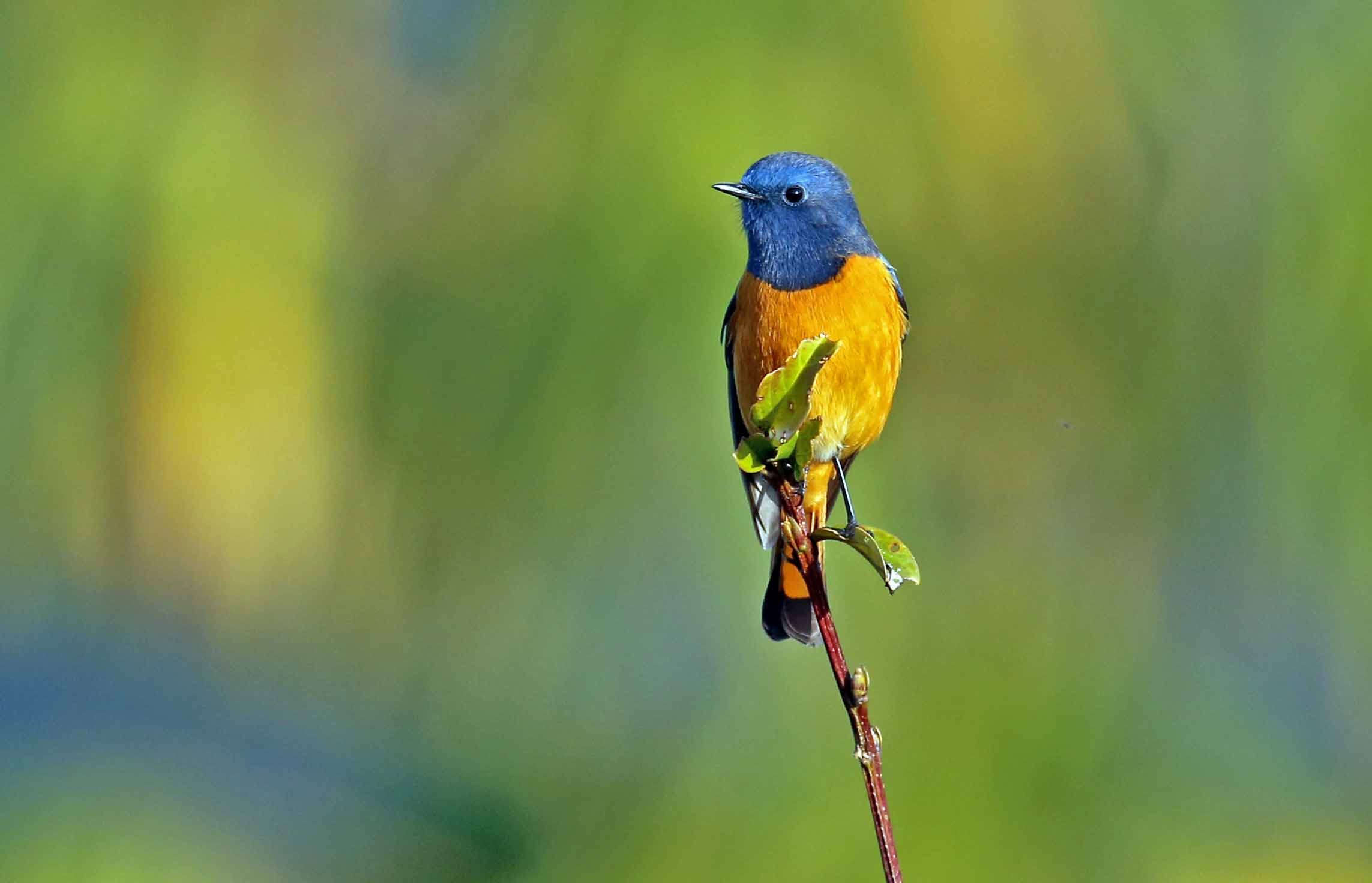
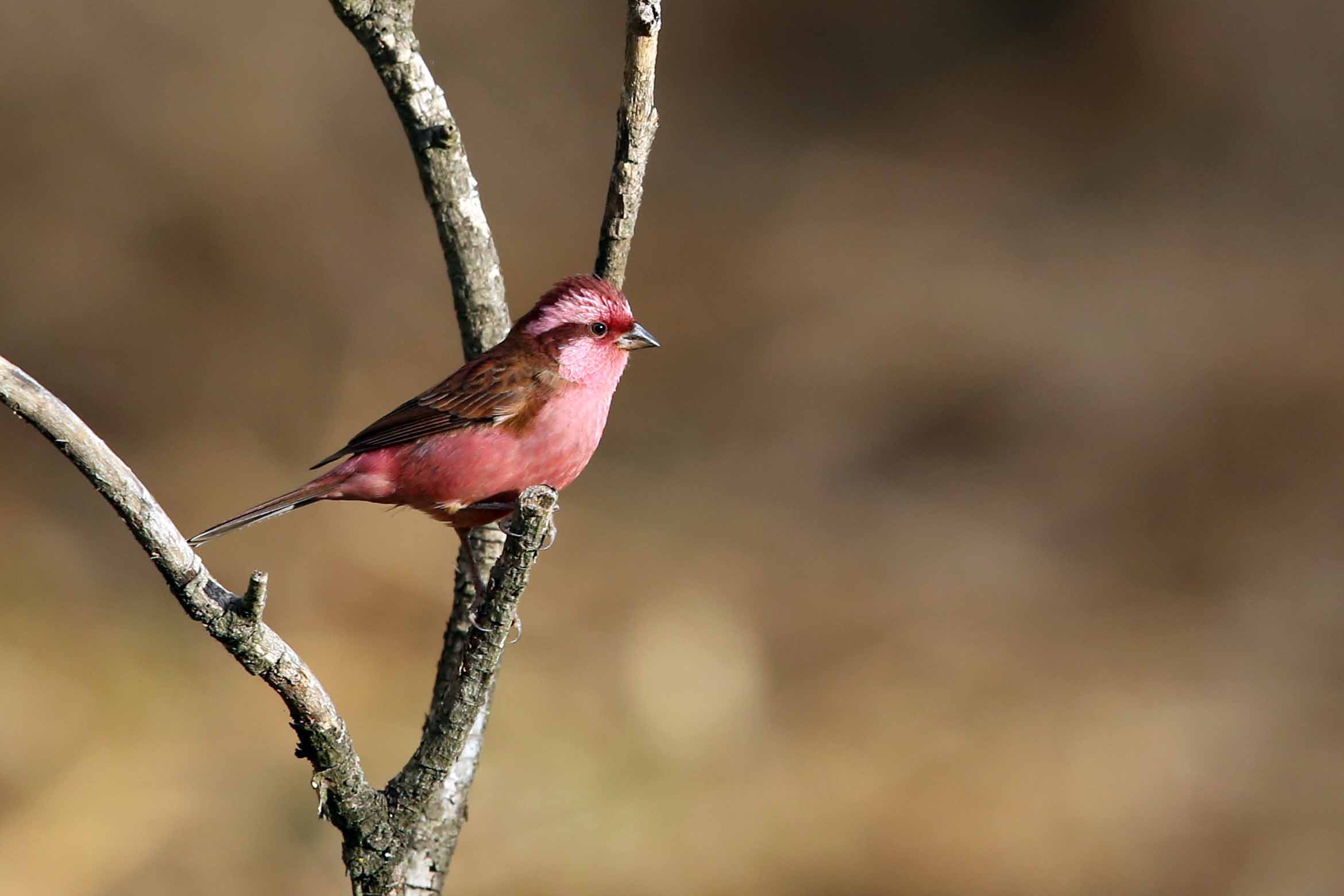

Spotted laughingthrushes were always the first ones to be heard but the last to show up. Stripe-throated scimitar babblers moved through the dense undergrowth followed closely by chestnut-crowned and black-faced laughingthrushes and a single blue whistling thrush. A bright emerald green flash and my binoculars focused on the fire-tailed myzornis feeding among pink daphne blossoms. Away from the village, the sound of the collared owlet and the great barbet, seemed to echo all around us.

Discovering...
a new microhabitat
Lower down into the valley, a new microhabitat opened up to us. Skulkers like the rufous-throated wren babbler, a lone chestnut-headed tesia, mixed flocks of parrotbills, rufous-fronted babblers, golden-breasted fulvettas, yuhinas and many more brightly patterned jewels preferred these dense valley forests over the windy and open ridges.
As we returned back to camp, still excited about our unbelievable morning, we paused at the shoulder of a hill to catch our breath. The day had grown warmer and we could see Himalayan griffon vultures, steppe eagles and a goshawk soaring around the ridge.
On our last day, we decided to visit the higher reaches of the region, to catch a glimpse of the famed Himalayan views. The mountain views were spectacular and we were blessed with another clear day. And as for the birds, red-crossbills were everywhere, even within the hamlet. Red-mantled rosefinches, altai accentors, green-tailed sunbirds and a few rufous-naped tits were amongst the other exciting birds seen in the area. One could imagine this to be one of the most perfect spots in the Himalaya, with Mount Everest in front, the orange glow of Mount Kanchendzonga to our right, forests to the left and birds behind us in the trees.
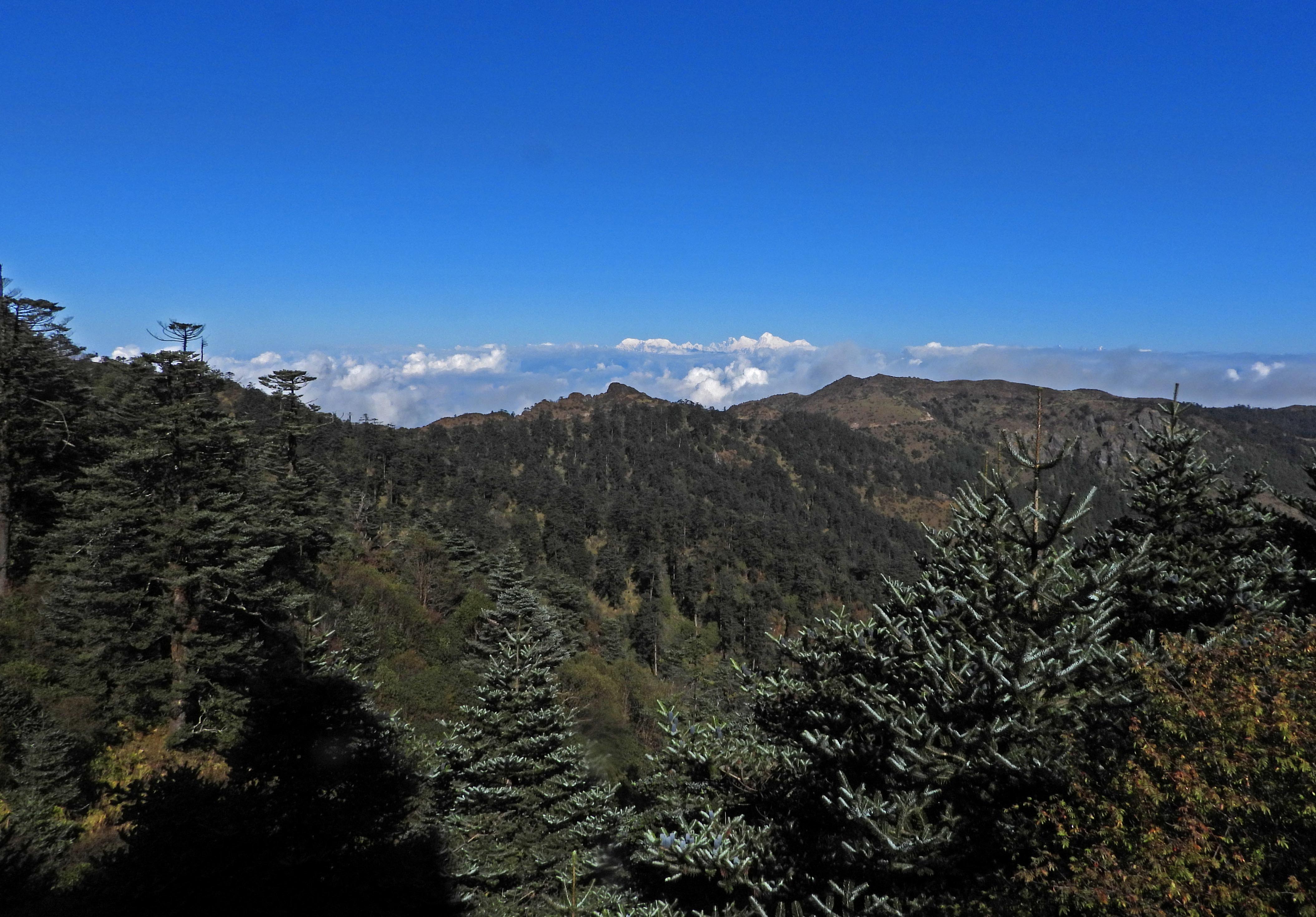
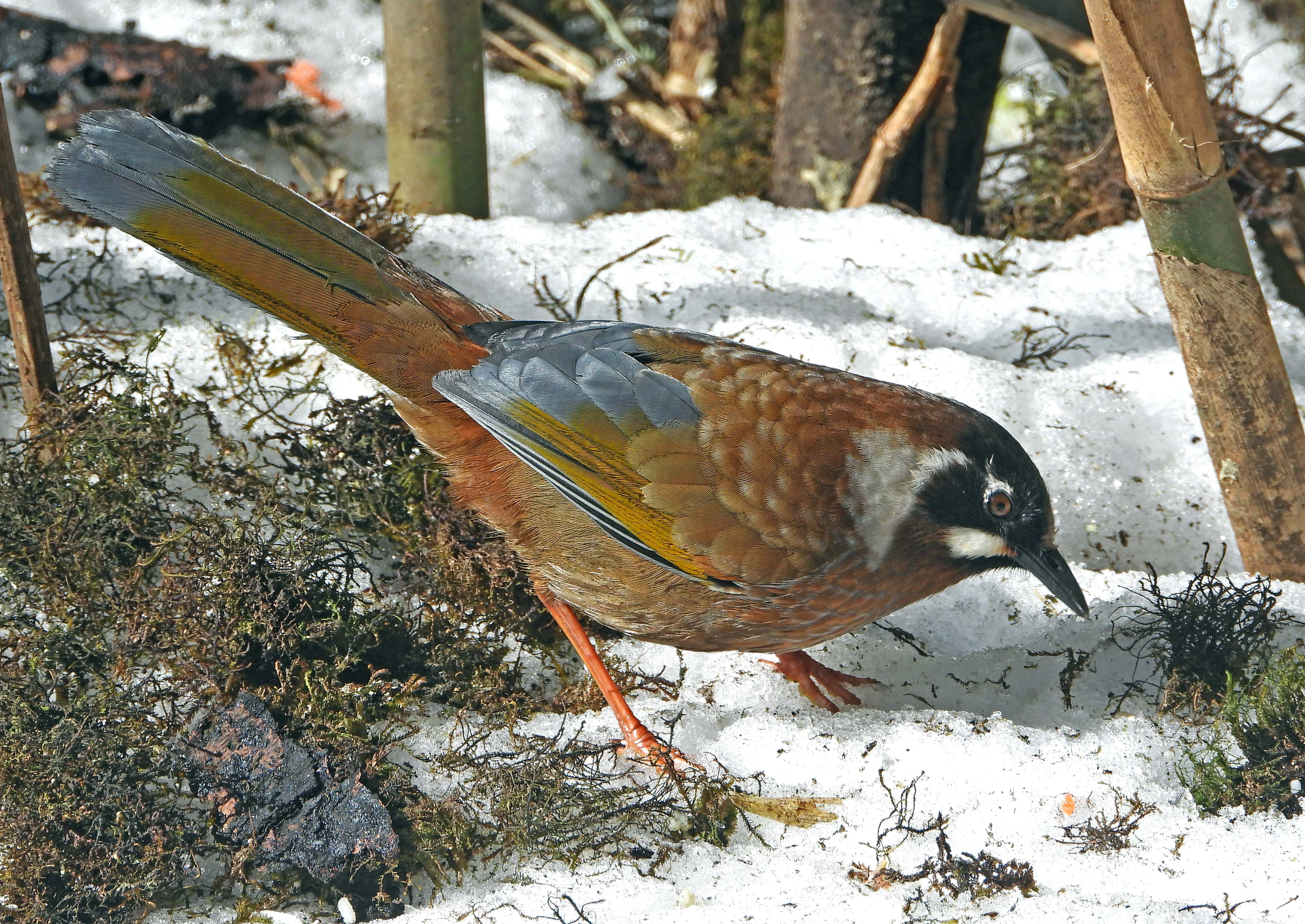
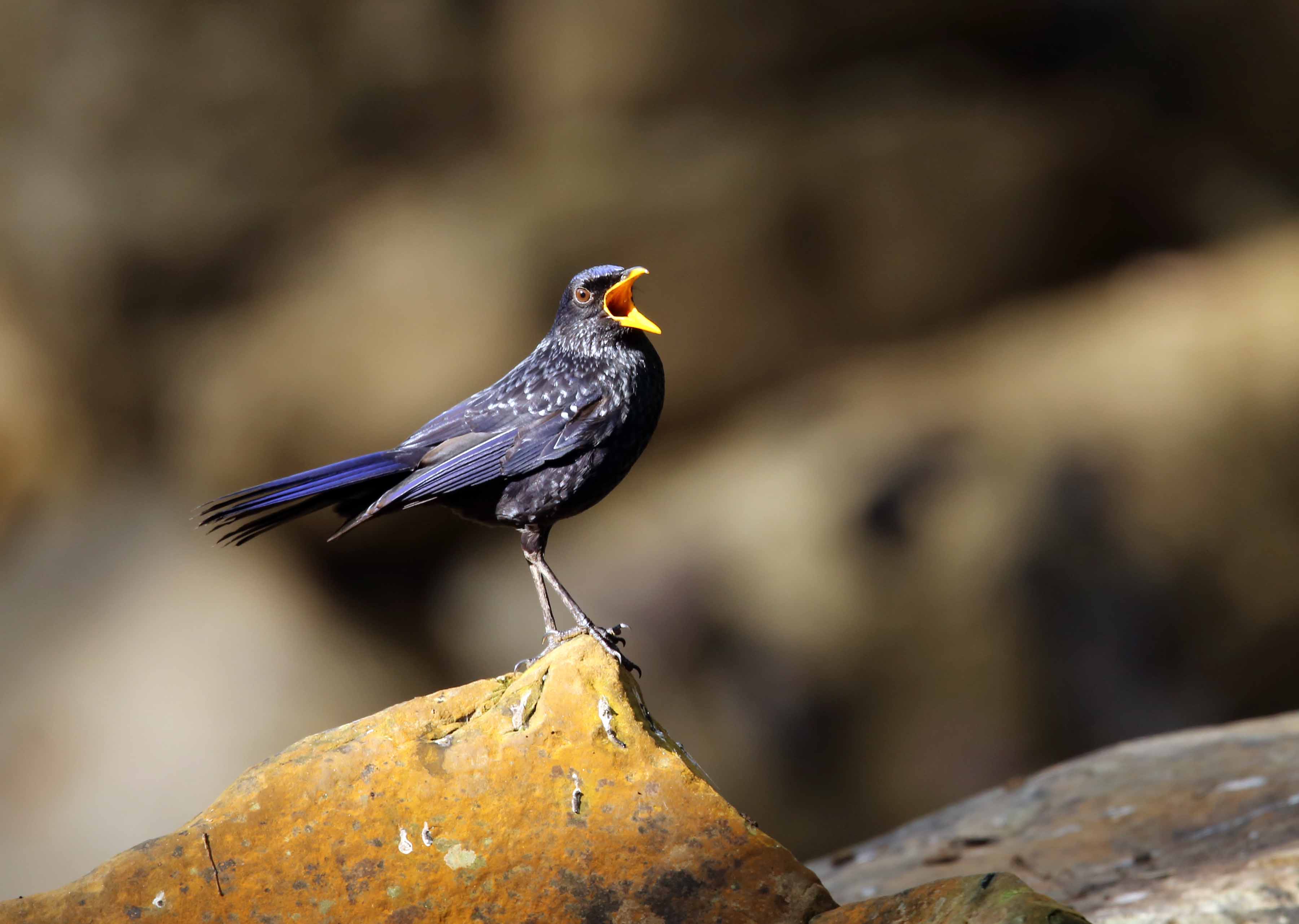
Returning back after a great birding trip
We bid farewell to our friends at Kayankatta and returned down the valley. As we crossed a dense bamboo patch close to a valley bottom, a bright red bird stepped onto the path. The satyr tragopan stood there motionless, long enough for us to get good views before disappearing behind the bamboo.


About the Autor:
Surya Ramachandran
Surya Ramachandran is an engineer from the south indian city of Chennai who later pursued his passion into the wild. His jungle journey that commenced in the forests of Satpura at Forsyths, started as an intern and then later turned into a full time naturalist. He currently is working on creating wildlife tours in off the map destinations and setting up wildlife lodges and experiences in Ladakh in the trans-Himalayas with snow leopard and other lesser fauna present there as the focus.
